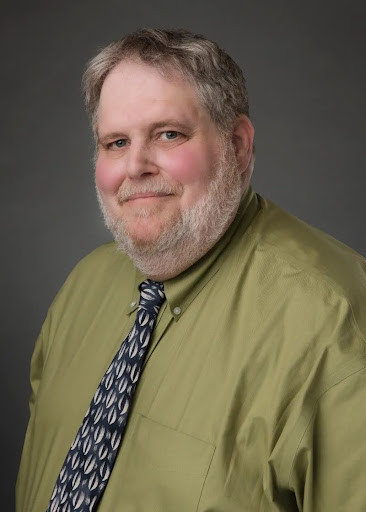Dr. Matthew Zuch on How Mistaking Fear, Worry, and Stress for Anxiety Contributes to the Growing Mental Health Crisis

Fear, worry, stress, and anxiety are words often used synonymously, but the confusion comes at a cost. While fear, worry, and stress are natural and even necessary for survival, anxiety belongs in a very different category; it is a mental health disorder that can devastate daily life if left unchecked.
Dr. Matthew Zuch is a former clinical director at a major teaching hospital in New York, a seasoned psychologist in private practice, and a specialist in cognitive behavioral therapy (CBT). His expertise in anxiety treatment places him at the forefront of an increasingly important conversation: the misuse and misunderstanding of the words fear, worry, stress, and anxiety.
Noting how these terms are often used interchangeably, Dr. Zuch emphasizes that conflating them not only clouds the understanding of anxiety but also risks trivializing experiences that can be profoundly debilitating. "Fear, worry, and stress are typical human emotions that arise in response to difficult situations. Anxiety, by definition, is not," he explains. "Anxiety is an experience that is out of proportion to the stimulus, and it deserves to be recognized for what it is."
From an evolutionary standpoint, emotions such as fear, worry, and stress have developed to help us survive, adapt, and thrive in our lives. Fear has long been a biological response designed to keep people safe. Thousands of years ago, the sight of a lion in the distance demanded immediate action. Similarly, stress has adaptive roots. It readies us for periods of productivity or endurance when demands are high. Worry, too, can be useful. Concern over whether there is enough food stored for winter or enough money in a bank account to pay bills can be constructive, acting as a prompt to action and preparedness.
As Dr. Zuch puts it, "Emotions exist to give us information. Excitement tells us, 'this was fun - let's do it again.' Love tells us, 'I want to spend more time with this person versus another.' Fear tells us, 'get out of danger'. Anxiety, however, is not a helpful response and is based on either a catastrophic overresponse to a situation or on miscategorizing something as dangerous when, in fact, it is not."
The DSM-5 defines anxiety disorders as involving excessive fear, anxiety, and related behavioral disturbances, where the response is disproportionate to the actual situation. Dr. Zuch illustrates this distinction with an example: "If I don't have enough money to pay my bills, worry is an understandable response. That response tells me I should take action. But if I do have enough money, and yet every single month I'm still panicked that I won't be able to pay them, that's anxiety. The situation is miscategorized as threatening. Bills should not be seen as a threat when you have the money to pay them. The response, panic, is therefore not connected to the reality of the situation."
In his words, anxiety is a catastrophised or miscategorized fear or worry, an internal alarm system gone awry, one that insists danger is near even when none exists.
Dr. Zuch is particularly careful to clarify that anxiety is not an identity. "We are not anxious people. Anxiety is an emotion we have, like happiness or sadness," he says. "It is not who we are." Yet, because the feelings it produces are so overwhelming, it can feel as though anxiety defines a person. Unlike fear, worry, and stress, which are natural human emotions that are in proportion to a situation, anxiety is a mental health condition that is a miscategorization or catastrophic response and therefore can and should be treated.
These miscategorizations can stem from past experiences and mental habits. A harsh look from a parent can, years later, trigger fear when a partner makes the same expression, even though the context is entirely different. Habits like catastrophizing, turning small problems into looming disasters, or black-and-white thinking can cause and tighten anxiety's grip.
The brain, he says, is always looking for danger. The survival of the human species depended on it. And in the absence of dangerous stimuli, the brain sometimes invents some.
Treatment, in Dr. Zuch's view, begins with restructuring the mindset. Cognitive behavioral therapy (CBT) helps patients identify distorted thought patterns and reframes them. "It's like any important ability," he explains. "You have to practice asking yourself: Why am I feeling this way? Am I in real danger? If not, what's actually happening here?"
CBT also involves changing behaviors. One way would be by increasing exposure to feared situations and learning to manage the anxiety response through relaxation strategies, deep breathing, muscle relaxation, and positive self-talk. In this way, a person can learn to recategorize stimuli as non-threatening and also reduce overly catastrophic interpretations.
Over time, practice strengthens the ability to turn down the "volume" of the anxiety response by reducing the tendency to catastrophise. It also strengthens the ability to recategorize stimuli, allowing the response to be restored to its rightful place as an emotion.
Anxiety is, as he describes, "a terrible, paralyzing feeling." Left unchecked, it can impair relationships, sleep, careers, and overall well-being. Dr. Zuch urges people not to delay seeking help when anxiety begins to invade life. "Nobody should be living with that kind of suffering," he says.
Looking forward, Dr. Zuch and his practice are exploring new technologies and methods to treat anxiety that will complement traditional CBT with innovative approaches.
At the core of his philosophy remains a simple, clarifying message: fear, worry, and stress are natural human emotions, evolutionarily developed to help people survive and grow. Anxiety, however, is different. It is not a quirk of personality, nor is it something to accept as part of everyday life. It is a misfiring of the mind's protective systems, and with the right tools, it can be reduced and managed.
Dr. Matthew Zuch
Dr. Matthew Zuch on How Mistaking Fear, Worry, and Stress for Anxiety Contributes to the Growing Mental Health Crisis
Fear, worry, stress, and anxiety are words often used synonymously, but the confusion comes at a cost. While fear, worry, and stress are natural and even necessary for survival, anxiety belongs in a very different category; it is a mental health disorder that can devastate daily life if left unchecked.
Dr. Matthew Zuch is a former clinical director at a major teaching hospital in New York, a seasoned psychologist in private practice, and a specialist in cognitive behavioral therapy (CBT). His expertise in anxiety treatment places him at the forefront of an increasingly important conversation: the misuse and misunderstanding of the words fear, worry, stress, and anxiety.
Noting how these terms are often used interchangeably, Dr. Zuch emphasizes that conflating them not only clouds the understanding of anxiety but also risks trivializing experiences that can be profoundly debilitating. "Fear, worry, and stress are typical human emotions that arise in response to difficult situations. Anxiety, by definition, is not," he explains. "Anxiety is an experience that is out of proportion to the stimulus, and it deserves to be recognized for what it is."
From an evolutionary standpoint, emotions such as fear, worry, and stress have developed to help us survive, adapt, and thrive in our lives. Fear has long been a biological response designed to keep people safe. Thousands of years ago, the sight of a lion in the distance demanded immediate action. Similarly, stress has adaptive roots. It readies us for periods of productivity or endurance when demands are high. Worry, too, can be useful. Concern over whether there is enough food stored for winter or enough money in a bank account to pay bills can be constructive, acting as a prompt to action and preparedness.
As Dr. Zuch puts it, "Emotions exist to give us information. Excitement tells us, 'this was fun - let's do it again.' Love tells us, 'I want to spend more time with this person versus another.' Fear tells us, 'get out of danger'. Anxiety, however, is not a helpful response and is based on either a catastrophic overresponse to a situation or on miscategorizing something as dangerous when, in fact, it is not."
The DSM-5 defines anxiety disorders as involving excessive fear, anxiety, and related behavioral disturbances, where the response is disproportionate to the actual situation. Dr. Zuch illustrates this distinction with an example: "If I don't have enough money to pay my bills, worry is an understandable response. That response tells me I should take action. But if I do have enough money, and yet every single month I'm still panicked that I won't be able to pay them, that's anxiety. The situation is miscategorized as threatening. Bills should not be seen as a threat when you have the money to pay them. The response, panic, is therefore not connected to the reality of the situation."
In his words, anxiety is a catastrophised or miscategorized fear or worry, an internal alarm system gone awry, one that insists danger is near even when none exists.
Dr. Zuch is particularly careful to clarify that anxiety is not an identity. "We are not anxious people. Anxiety is an emotion we have, like happiness or sadness," he says. "It is not who we are." Yet, because the feelings it produces are so overwhelming, it can feel as though anxiety defines a person. Unlike fear, worry, and stress, which are natural human emotions that are in proportion to a situation, anxiety is a mental health condition that is a miscategorization or catastrophic response and therefore can and should be treated.
These miscategorizations can stem from past experiences and mental habits. A harsh look from a parent can, years later, trigger fear when a partner makes the same expression, even though the context is entirely different. Habits like catastrophizing, turning small problems into looming disasters, or black-and-white thinking can cause and tighten anxiety's grip.
The brain, he says, is always looking for danger. The survival of the human species depended on it. And in the absence of dangerous stimuli, the brain sometimes invents some.
Treatment, in Dr. Zuch's view, begins with restructuring the mindset. Cognitive behavioral therapy (CBT) helps patients identify distorted thought patterns and reframes them. "It's like any important ability," he explains. "You have to practice asking yourself: Why am I feeling this way? Am I in real danger? If not, what's actually happening here?"
CBT also involves changing behaviors. One way would be by increasing exposure to feared situations and learning to manage the anxiety response through relaxation strategies, deep breathing, muscle relaxation, and positive self-talk. In this way, a person can learn to recategorize stimuli as non-threatening and also reduce overly catastrophic interpretations.
Over time, practice strengthens the ability to turn down the "volume" of the anxiety response by reducing the tendency to catastrophise. It also strengthens the ability to recategorize stimuli, allowing the response to be restored to its rightful place as an emotion.
Anxiety is, as he describes, "a terrible, paralyzing feeling." Left unchecked, it can impair relationships, sleep, careers, and overall well-being. Dr. Zuch urges people not to delay seeking help when anxiety begins to invade life. "Nobody should be living with that kind of suffering," he says.
Looking forward, Dr. Zuch and his practice are exploring new technologies and methods to treat anxiety that will complement traditional CBT with innovative approaches.
At the core of his philosophy remains a simple, clarifying message: fear, worry, and stress are natural human emotions, evolutionarily developed to help people survive and grow. Anxiety, however, is different. It is not a quirk of personality, nor is it something to accept as part of everyday life. It is a misfiring of the mind's protective systems, and with the right tools, it can be reduced and managed.
© Copyright IBTimes 2025. All rights reserved.





















